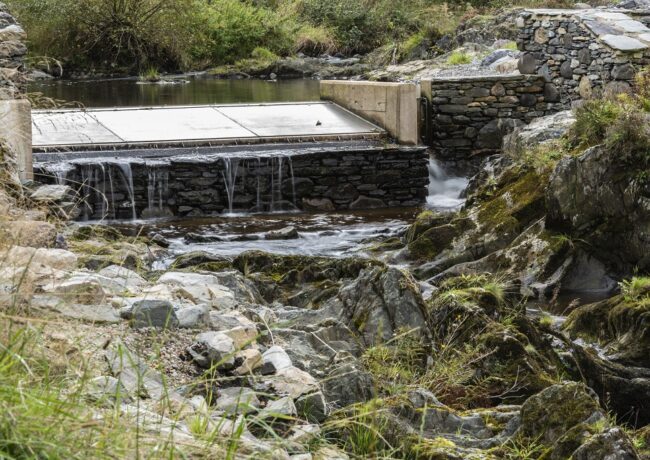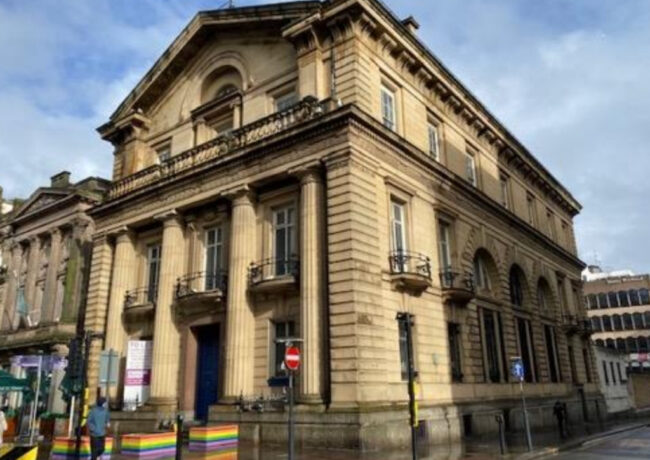National Trust completes £35m renewable energy investments
After more than 130 projects, the conservation charity now generates 50% of its own energy as part of its aim to be net zero by 2030.
The National Trust has invested £35m since 2013 in the endeavour, which has seen it install biomass boilers and ground-sourced heat pumps in its historic homes, restore hydro-turbines in the Lake District, and utilise solar panels at heritage estates.
Altogether, the projects generate 24m kilowatt hours of energy each year, which the trust says is enough to power more than 8,400 homes. The organisation also says its efforts have saved 4,000 tonnes of carbon each year.
Replacing oil boilers with sustainable heating systems has been a large part of the trust’s plans. As a result, the amount of energy the charity uses that comes oil has decreased from 20% 10 years ago to 7% today.
“Over a decade ago we set ourselves the ambition of growing our own energy and reducing our reliance on fossil fuels, and began a serious programme of investment shortly after,” said Patrick Begg, director of outdoors and natural resources at the National Trust. “We’ve since completed 138 projects – and most you wouldn’t even know are there.”
Begg continued: “Many of our historic properties that were once reliant on oil are now fuelled by natural resources and much of our visitors’ experience is rooted in renewables – from the exquisite tapestries on view that need carefully-controlled humidity, to the holiday cottages kept warm by heat pumps and the lights turned on in our hydro-powered pub.”
North West projects include a hydro-turbine in Watendlath, one of 11 hydropower units that have been installed in the Lake District by the trust.
Watendlath was no stranger to hydropower, having a turbine first installed in the 1920s before falling out of use decades later. This year, the trust installed a new hydro system that can generate enough energy to power 84 average-family homes. This energy goes directly into the National Grid.
Will Handford, renewable energy programme director with the trust, said: “Watendlath is one of the most spectacular locations in the Lake District so it’s crucial that the system blends seamlessly into the landscape. It shows how we can sympathetically install green energy projects into treasured settings – which has been our mission from the start.
“Projects like this are an investment in the future, and many are already generating an income, with excess power sold back to the grid and the money ploughed back into conservation of our buildings and landscapes.
Other North West projects include the hydro-powered Sticklebarn pub in Ambleside. Sticklebarn’s Stickle Ghyll hydro was installed in 2015 and uses the water flowing in Langdale Valley for power.
In 2017, Speke Hall by Liverpool received a ground source heat pump. The heat pump connects directly to the 1895 central heating system at the historic estate. The National Trust estimates the Speke Hall heat pump saves 28 tonnes of carbon emissions a year.
A biomass boiler was installed in Dunham Massey in Cheshire. Biomass boilers use the burning of plants and wood to create heat buildings. At Dunham Massey, the boiler is capable of heating the house, restaurant, visitor centre, and the on-site cottages. The National Trust estimates that the boiler saves more than £33,000 in heating costs annually.
In North Wales, National Trust Cymru has installed a biomass boiler that provides heat for Penrhyn Castle in Bangor. Solar panels have also been placed at the castle for this purpose. The trust estimates that its efforts to improve sustainability at Penrhyn Castle have resulted in saving 80 tonnes of carbon emissions a year.
Over in Snowdonia, the National Trust worked with manufacturer Hydrolite to install a hydroelectric turbine at Hafod y Porth. The trust said the energy generated by the turbine can power 120 homes and saves 207 tonnes of carbon emissions a year.
National Trust Cymru has also installed a number of “hidden” hydros around Snowdonia that can, together, generate 20m kilowatt hours of energy. That is enough to power 5,300 homes a year, according to the trust.





The amount of rivers in this country could produce energy for thousands of properties if small hydro or Archimedes screw generating on the weirs that are already in place.
By Alan Pickles
What a fantastic achievement by a charity. Shows local authorities how to do it.
By Peter Black
Very interesting
By Anonymous